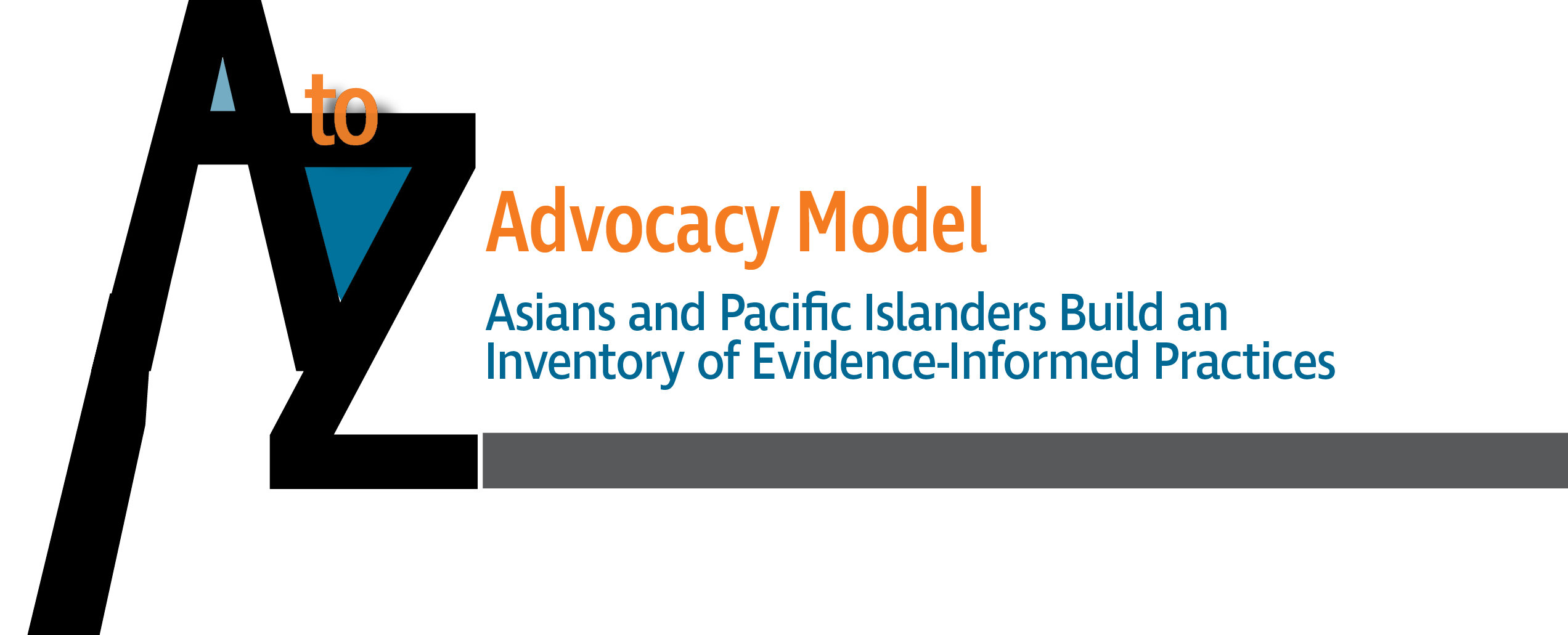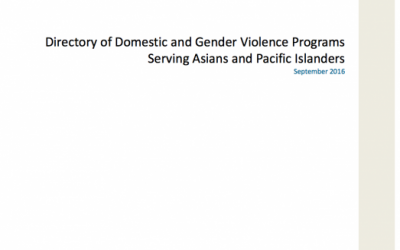A-Z Advocacy Model
Principles and Sub-Principles of the A-Z Advocacy Model
Principle One
An analysis of intersectionality and patriarchy deepens the understanding of root causes and becomes fundamental to program design.
- An analysis of how power, equality and empowerment are compromised by the intersectionality of oppressions, including patriarchy, is fundamental to the A-Z Advocacy Model.
- Confronting root causes and building culturally-specific interventions are intertwined in the A-Z Advocacy Model.
Principle Two
Culturally-specific programming means designing services that address ethnic and linguistic diversity within and among Asians and Pacific Islanders.
- Expanding language services to match the changing needs of ethnic communities, in some cases even beyond the original target population, is a principle of the A-Z Advocacy Model.
- Providing language access, often for multiple API and non-API languages is a principle of the A-Z Advocacy Model.
Principle Three
Survivor-centered advocacy is based on a culturally-specific analysis and definition of domestic and family violence.
- Broadening the definition and analyzing the differing dynamics of domestic violence in API families is a principle of the A-Z Advocacy Model.
- Culturally-specific definitions, interventions, and prevention of domestic violence become integral to systems change in the A-Z Advocacy Model
Principle Four
Integrating an analysis of, and responses to, gender-based violence when working with API survivors of domestic violence became evidence-informed practice.
- Broadening domestic violence services to address gender-based violence over the lifecourse is a survivor-centered advocacy principle of the A-Z Advocacy Model.
- Understanding the impact of lifecourse abuse and negative and positive help-seeking experiences has expanded a culturally-specific inventory of practice
Principle Five
Engaging in systems advocacy builds gateways to services through collaboration, policy advocacy, and research.
- Institutionalizing systems advocacy to mitigate system barriers is a principle of the A-Z Advocacy Model.
- Taking leadership on systems advocacy to mitigate language access barriers for all survivors with limited English proficiency is a principle of the A-Z Advocacy Model.
- Integrating tools for economic security is a growing component of the A-Z Advocacy Model. Policy advocacy on behalf of Asian (and other) immigrant survivors is a core organizing principle for systems advocacy in the A-Z Advocacy Model.
- Research to establish need and analyze context is a strategy for systems advocacy in the A-Z Advocacy Model.
- Unique collaborations to promote systems advocacy for immigrant survivors unfamiliar with systems in the U.S. is a principle of the A-Z Advocacy Model.
Related Resources
Directory of Domestic & Gender Violence Programs Serving Asians, Native Hawaiians and Pacific Islanders, 2023
Lists roughly 150 agencies in the U.S. that have culturally-specific programs designed for survivors from Asian and Pacific Islander communities.

